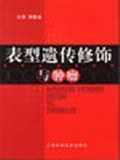

The telecommunications industry defies easy characterization. The long-distance sector is highly competitive and the local exchange sector much less so, while digital transmission and switching have blurred the distinction between traditional voice communication and the transmission of video and data messages. Regulation of this industry has generally been considered necessary because it has aspects of a natural monopoly.This book takes an empirical approach to natural monopoly and the need for regulation of telecommunications. The centerpiece of the analysis is a sophisticated engineering cost proxy model, the local exchange cost optimization model (LECOM). The book, which is largely methodological, shows that a combination of LECOM, econometrics, and simulations can aid policy discussion of such contentious issues as incentive regulation, natural monopolies, estimating the cost of interconnection among networks, and the obligation of universal service. The book presents a theoretical framework to explain the incentives of firms and the power of regulation and then uses LECOM to test the theoretical implications. The work is unusual in that it applies the foundations of regulation theory to a model of an industry rather than applying econometric theory to historical cost data. The book includes a CD-ROM containing the data set the authors used to analyze their model.
具体描述
读后感
评分
评分
评分
评分
用户评价
相关图书
本站所有内容均为互联网搜索引擎提供的公开搜索信息,本站不存储任何数据与内容,任何内容与数据均与本站无关,如有需要请联系相关搜索引擎包括但不限于百度,google,bing,sogou 等
© 2025 book.wenda123.org All Rights Reserved. 图书目录大全 版权所有




















